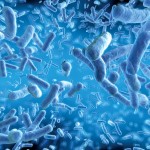 Originally published in SimplyHealth247:
Originally published in SimplyHealth247:
Grace Hall, an expert in complementary medicine, tells us. “In the thirty years I have been working in the complementary medicine field, I have seen many interesting cases where, what seemed like an enjoyable holiday or necessary business trip has had consequences far beyond anything the travellers could have imagined.”
Thankfully, most of us will never encounter these illnesses, living in the relatively safe shores of the UK, but they are a timely reminder of some health challenges that exist in other parts of the world.
It is also worth mentioning, that without conventional medicine, these illnesses could have had an even more serious outcome. Complementary medicine can work alongside conventional medicine to speed up the healing process for those affected.
Remember at the first sign of concern; contact your doctor who will arrange appropriate stool or blood tests.
Cryptosporidiosis
This illness is caused by the parasite cryptosporidium parvum, a protozoan present in drinking water. Commonly affecting domestic and farm animals, public water supplies can be affected, normally when water runs off from agricultural land into the public water supplies.
Whom It Affects: mainly children, travellers and those with compromised immune systems.
Symptoms: Severe diarrhoea. In a recent outbreak in the US, thousands suffered and 100 died.
Case History: A 58-year-old man who had suffered a particularly bad episode of cryptosporidiosis visited me and it was interesting to note the circumstances he contracted the illness as many of us will be exposed in similar circumstances while travelling. He had visited a town in SW France called Carcassonne where he and his family had rented a holiday home. The house was a three-story house dating from the 16th century. It had stood unused for over 100 years and had just only recently been renovated. This booking was the first booking of the season and therefore the water in the tanks and pipes had been stagnant for approximately six months. The family lasted two days in the property before deciding it was too damp, cold and ‘smelt funny’. Within days of leaving for a local hotel, the man began to feel ill and the holiday was cut short, as he was too ill to carry on.
His doctor prescribed metronidazole but recovery was very slow as it was later discovered he had a complex immune system disease and my work with him involved trying to improve his general health as well as treating the cryptosporidiosis.
Remember: think carefully about the water supply. It may have been stagnant for months prior to your arrival. Run off the water in the tank and don’t use water you find sitting in a kettle. Boil all water if you are at risk as described above and use bottled water where possible.
Giardiasis – ‘Travellers Diarrhoea’
Again, this illness is caused by a waterborne parasite, Giardia lamblia. Adding chlorine to water supplies does not kill the parasite and outbreaks can often occur in heavily chlorinated areas. It is spread via two routes: through water supplies and through unwashed hands contaminated with faeces.
Whom It Affects: Children are particularly affected in the UK but adults often acquire the illness when travelling. Again, the risk for people with a diminished immune response is much higher.
Symptoms: watery diarrhoea that begins without warning, flatulence and distended stomach. It is not usually accompanied by a fever, and sufferers can be left with lactose intolerance.
Case History: A 35-year-old woman visited me together with her two children aged 3 and 5. She had returned from the continent with severe diarrhoea and weight loss and had been treated by a specialist with metronidazole, which would be successful for a short time, but she knew her digestive system had never recovered. Neither of her children was well and both complained of stomachache, which was followed by vomiting and diarrhoea while at the clinic. ‘Biofeedback’ testing showed that both had been exposed to the giardia lamblia parasite and both children required medication.
A side effect for the mother was she developed lactose intolerance and we worked together eliminating troublesome foods after she kept a food diary for several weeks.
They all made a full recovery.
Remember: always wash your hands while preparing foods and maintain hygiene at all times.
Tsetse Fly
The tsetse fly is a large biting fly from Africa. It feeds on the blood of vertebrate animals and infects both humans and animals with potentially fatal infections.
A bite from a tsetse fly can cause sleeping sickness in humans, if the fly is carrying the disease.
Treatment with prescription drugs is essential and if caught early the sickness can be halted.
Case History: A 27 year old visited me after a safari holiday in Africa during which he had been bitten by a tsetse fly. Prompt medical treatment in a city hospital had stopped the sickness, but the area of the bite was a dark wound with a surrounding area of red skin, constantly discharged fluid. His doctor had prescribed antibiotics to clear the wounds but they were still very painful. We used poultices of Bentonite Clay to draw out and purify the area. The wound was infected with maggots, which came away with the poultice. We followed a six-month course of immune boosting treatment as the experience had weakened his general health.
He later told me that the local workers had told his girlfriend that one of their solutions to this problem was to make sure that all clothes, sheets, towels and pillowcases were pressed with a hot iron as the heat killed off eggs and flies that may lurk in the hems and creases of the fabric.
Lyme Disease – Tickbite Fever
Lyme disease (Lyme Borreliosis) is an infectious disease transmitted by bacteria from deer or sheep ticks. This illness can be eliminated by antibiotics.
Symptoms: If left untreated, symptoms, are similar to arthritis, Chronic Fatigue Syndrome and can cause nerve damage.
Important Facts: Blood and urine tests are not always reliable and don’t always rule out the disease. Often sufferers do not recognize having been bitten and should look for bite marks with red rings around the bite.
Always wear long sleeved clothing and tuck your trousers into your socks to prevent ticks getting into your clothing. If you do find a tick, remove it with tweezers so the infection, will hopefully, be slight.
Treatment should be by antibiotics to kill off the bacterial organisms and this can be backed up with herbal remedies, immune stimulants and acupuncture for the arthritic pains.
Case history: Some years ago a 37-year-old woman on holiday in Austria, was bitten by ticks and was careful to remove the ticks by tweezers. Four weeks later, she came for a check-up with me and described the symptoms. She had had one course of antibiotics form the doctors but still had symptoms of joint pains, neck stiffness and Chronic Fatigue Syndrome. She again went back to her GP and asked if she could have further tests or be referred to a microbiologist. Eventually it was confirmed that she had been exposed to the infectious bacteria and was given two further courses of antibiotics plus homoeopathic, probiotic and immune stimulants. She made a full recovery.
NB. Always remember the highest risk of being bitten by ticks is in wooded areas and in the UK, the infection can be picked up in areas such as Exmoor, South Downs, New Forest, Wiltshire and Berkshire.
After some of those horror stories, staying in and watching the TV looks quite appealing but remember they are isolated examples, so take the correct preventative measures, be informed and enjoy your travels!


